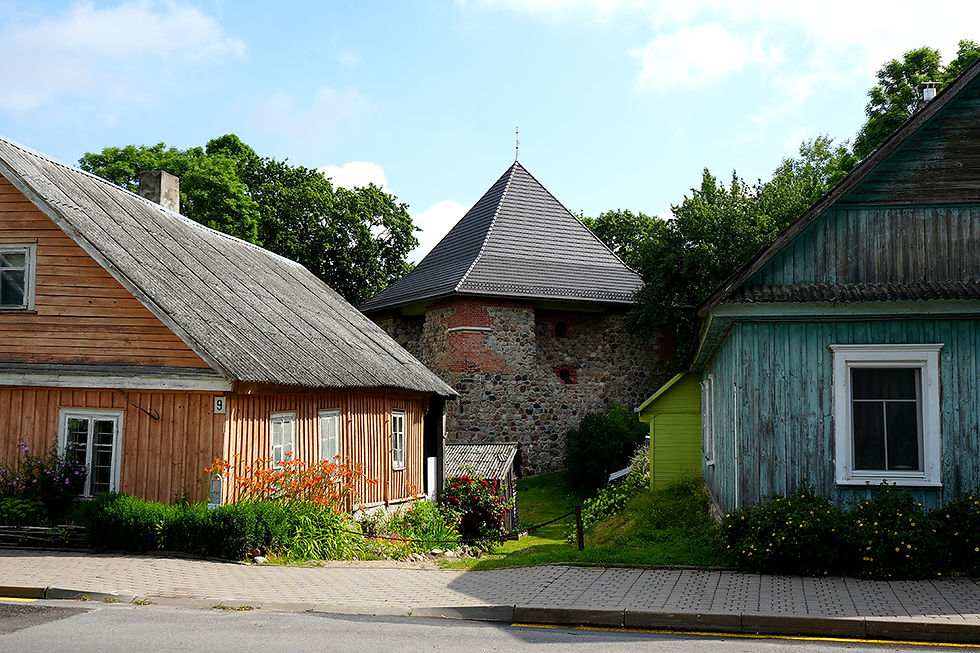The deep West
- lavieenroute
- Sep 21
- 3 min read
"Deep in the West, where the sun is dusty, it's better, much better than you think."*
Dortmund, Essen, Bochum, Duisburg, Recklinghausen, Gelsenkirchen, and many more. Together, these cities, which form the Ruhr region and often merge into one another, have a population of over 5 million. That's more than the German capital Berlin, and yet this considerable conurbation is hardly ever mentioned as a travel destination.
Yet there is so much to discover. For example, the somewhat austere charm of the city of Dortmund, which we have chosen as the base for our discovery tour. Dortmund reveals its charm at second glance. With a city center full of street pubs, for example. With a striking former industrial building, the “Dortmunder U,” which has become a landmark. With murals that are truly worthy of the name. With the legendarily relaxed way the locals behave.
A warm welcome: mural in Dortmund.

Another thing that is not yet widely known among travelers is the cultural offerings in the region. One example is the "Zeche Zollverein" complex in Essen. What was a coal mine until 1986 is now essentially a museum campus and renaturalized park, whose remarkable architecture has been preserved. It is also a UNESCO World Heritage Site, among other factors because it serves as an example of the transformation of an industrial region into a cultural region.
Zeche Zollverein: Enduring architecture, now with an extra-long escalator.

In addition to the numerous museums, the heritage of the Ruhr region is also evident in the landscape. On the one hand, you can still see steaming chimneys today. Refineries, for example, or chemical plants. On the other hand, many former scars on the landscape have simply been turned into art. Particularly worth seeing are the works called “Tetraeder” and “Tiger & Turtle” in Bottrop and Duisburg, respectively, which were created on former rubble sites – because in their respective surroundings they are rather surprising and, in their own way, absolutely spectacular.
A tiger and a turtle. As you can clearly see.

The cities of the Ruhr region are certainly less picturesque than elsewhere, and Recklinghausen is unlikely to become Heidelberg anytime soon. But they undoubtedly have their charms. For foodies, too: we recommend the ubiquitous and highly recommended currywurst, which is of course also available in vegetarian versions. And the multicultural Ruhr region is not only enriching from a culinary point of view.
So who should travel to the Ruhr region? Anyone with a spirit of discovery who likes to avoid Germany's overcrowded tourist destinations or wants to get to know a completely different side of the country that has had a major impact on it over the last century. It is therefore to be hoped that the recent political developments and the rise of extreme movements will not continue. Because there is a lot to see here, where the heart still counts.*
(*Quotes from the wonderful song “Bochum” by the magnificent Herbert Grönemeyer.)
Good to know
The Ruhr region is a large metropolitan area with several airports and major cities that are also very well connected by train. We traveled via Düsseldorf Airport, which is only about 20 km from Duisburg, the westernmost major city in the Ruhr region. There are several flights a day from Switzerland to this airport. If you were to travel by train or car, you should allow around 6-7 hours (based on the Zurich-Duisburg route).
Distances within the Ruhr area are manageable. Many attractions are located along the Duisburg-Dortmund axis; these cities are about 60 km apart.
We chose Dortmund as the starting point for our stay and stayed at the Residence Inn by Marriott, which convinced us with its large, clean rooms, very central location, and good value for money.
The Ruhr region is not a typical foodie destination, but there are still a few places, especially in Dortmund, that have stuck in our minds, for example:
Wurst Willi for the classic combination of currywurst and fries;
Emil, a fine restaurant located directly in the Dortmunder U;
Wenkers am Markt, right in the center of Dortmund with outdoor seating and rustic cuisine.



Comments